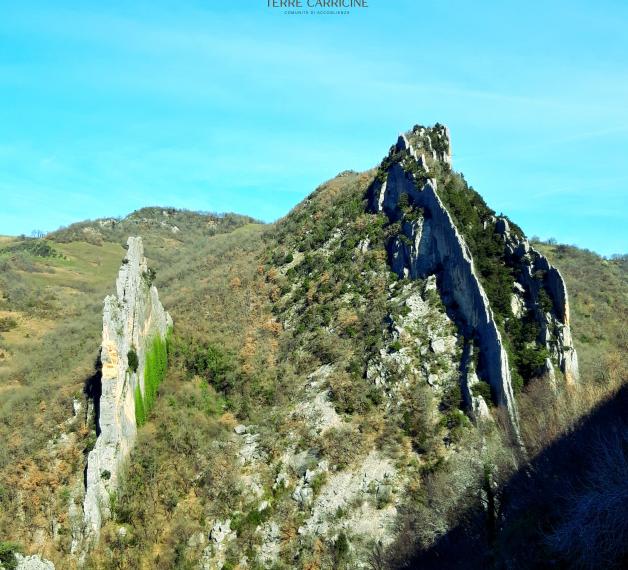Pennadomo, a typical town of Abruzzo, is one of the small villages which make Italy beautiful thanks to its fascinating natural heritage kept untouched over the centuries, with the outstanding Parco della Lisce and its dizzying “Placche dell’oasi” and the ancestral Gran Giara waterfall. Still today, Pennadomo keeps its medieval plant, all settled on the rocks and protected by the majestic “liscia di Santa Maria”, which over the centuries has given birth to the village laid on its foot like an ancestral crib out of time.
A small village, yet inside history, as proved by the archives, starting from the dal “Chronicon Vulturnese” dated 958 in the benedictine Abbey of San Vincenzo al Volturno, a document in the diocese of Chieti dated 1141, the “Justitieratus Aprutii” dated 1233 by emperor Frederik II of Swabia and the “Rationes decimarum Aprutium Molisium” dated 1308. According to the German scholar Theodor Mommsen, the history of Pennadomo (the name means the “Feather” in the territory “Domo”), certainly dates back before year One Thousand as it made an integral part of the Roman municipality of Juvanum nearby, in the imperial era, as the scholar writes in “Corpus inscriptionum latinarum”.
Being at the borders of the Kingdom of Naples, from 1100 approximately Pennadomo, was “owned” by several lords and dynasties (Annechino, Colonna, Valignani, etc.) until 1861. Since 1700 approximately, the village has grown in the neighbourhoods around Piazza dell’Unione and along the outer roads. Where these latter cross, a monumental fountain with a lavatory was built in 1840, today you can only see the part where water springs, a witness of the peasant civilization.
The village slowly unfolds towards the lower part from the neighbourhood of “ammond p’ la terre” where you can see beautiful stone architraves with freezes and emblems, some of which date back to 1600, and slightly climbs again from the square of the fountain to the neighbourhood San Lorenzo, where a rural church dedicated to Saint Lawrence, patron of the town, exists since 1100 although it has been rebuilt several times along the years.
[Credits | Text: Ottavio Di Renzo De Laurentis | Translation: Mirella Rapa | Voice and music: Studio Qreate | Photo: Laura Di Biase]

